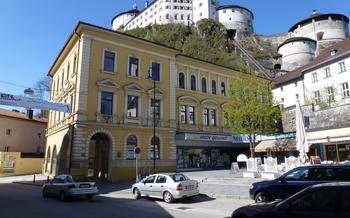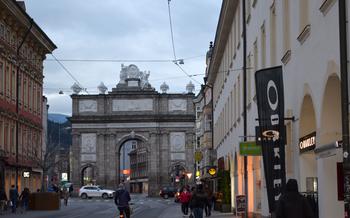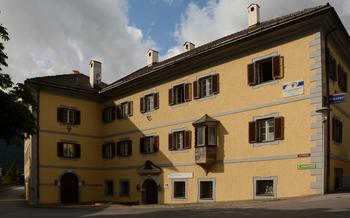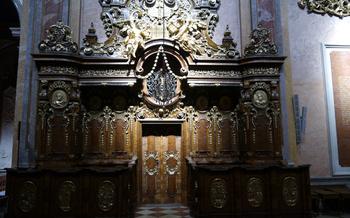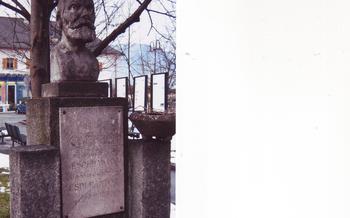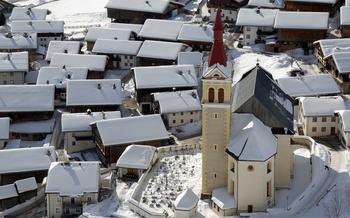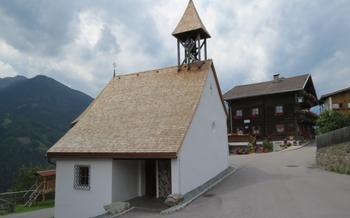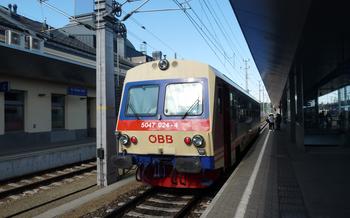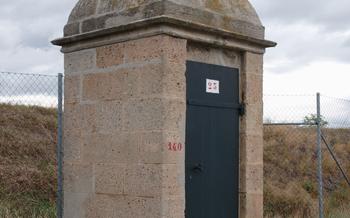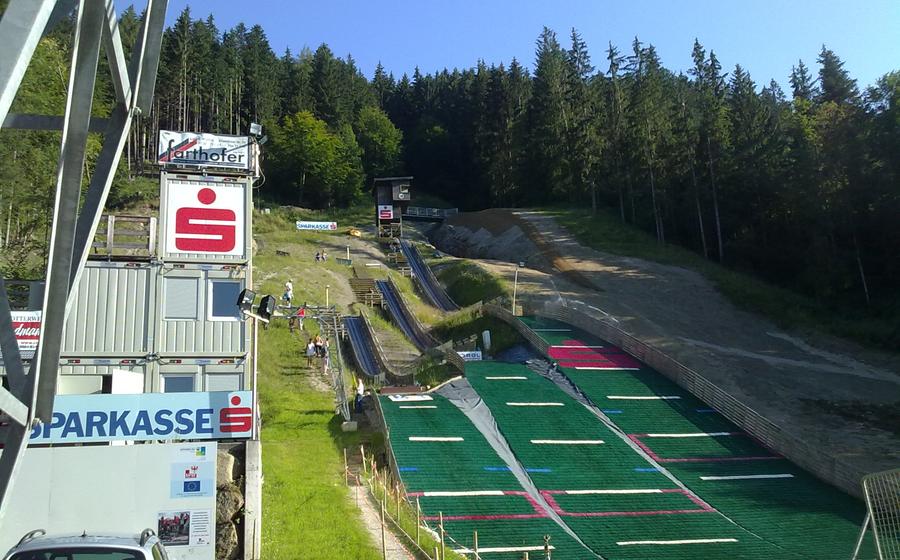
Mariastein Pilgrimage Church
- Wörgl’s Mariastein Pilgrimage Church: A Majestic Spiritual Haven
- Architectural Beauty
- Religious Importance
- Local Legends
- A Journey Through Time: The History of Mariastein Church
- Architectural Masterpiece: Unveiling the Church’s Design
- Sacred Symbolism: Exploring the Church’s Interior
- Pilgrimage Tradition: Mariastein’s Enduring Significance
- Miraculous Tales: Stories of Divine Intervention
- A Place of Worship and Reflection
- Exploring the Church’s Surroundings
- Planning Your Visit: Practical Information
- Uncovering the Church’s Hidden Gems
- Capturing the Essence: Photography Tips
- Local Insights: A Conversation with a Devotee
- Mariastein’s Legacy: A Source of Inspiration
- Events and Festivals: Celebrating Faith and Community
- Insider Tip: Unveiling a Hidden Treasure
Wörgl’s Mariastein Pilgrimage Church: A Majestic Spiritual Haven
Nestled amidst the picturesque Tyrolean Alps in Austria, the Mariastein Pilgrimage Church stands as a testament to faith, spirituality, and architectural brilliance. Steeped in history, this sacred site has been a beacon of hope and devotion for centuries, attracting pilgrims and visitors from far and wide.
The church's origins can be traced back to the 16th century, when a small chapel was built on the site of a miraculous apparition of the Virgin Mary. Over the centuries, the chapel underwent several expansions and renovations, culminating in the construction of the magnificent Baroque church that we see today.
Architectural Beauty
The Mariastein Pilgrimage Church is a masterpiece of Baroque architecture, showcasing intricate details and stunning craftsmanship. Its façade is adorned with elegant sculptures and carvings, while the interior boasts an array of ornate altars, captivating ceiling frescoes, and exquisite stained glass windows.
Religious Importance
The church is dedicated to the Virgin Mary, and it holds a special place in the hearts of Catholic pilgrims. Devotees from across the region flock to Mariastein seeking healing, guidance, and blessings. The church is also a popular destination for pilgrimages, with annual festivals drawing large crowds of faithful seeking spiritual renewal.
Local Legends
The church is steeped in local legends and tales of divine intervention. Stories of miraculous healings, answered prayers, and apparitions of the Virgin Mary have been passed down through generations. These legends have contributed to the enduring significance of Mariastein as a sacred site, drawing visitors from near and far who seek a glimpse of the divine.
A Journey Through Time: The History of Mariastein Church
The Mariastein Pilgrimage Church, nestled in the heart of Wörgl, Austria, has a captivating history that spans centuries. Its origins can be traced back to the 16th century, when a small chapel dedicated to the Virgin Mary was constructed on the site. As the chapel gained popularity among pilgrims, it underwent significant expansion and embellishments over the years.
In the 18th century, the church underwent a major Baroque renovation, transforming it into the architectural masterpiece it is today. The renowned architect Johann Martin Gumpp was commissioned to redesign the church, incorporating intricate Baroque elements and stunning frescoes. The result was a harmonious blend of artistic styles, creating a visually captivating space that inspires awe and devotion.
Throughout the 19th and 20th centuries, the church continued to be a destination for pilgrims seeking solace and spiritual guidance. It underwent further expansions and renovations to accommodate the growing number of visitors. In the modern era, preservation efforts have been undertaken to ensure that this historical and spiritual treasure remains intact for generations to come.
Architectural Masterpiece: Unveiling the Church’s Design
The Mariastein Pilgrimage Church stands as a testament to the grandeur of the Baroque architectural style. Its intricate details and opulent ornamentation captivate the eyes and inspire a sense of awe. The church's façade is a masterpiece in itself, adorned with intricate sculptures that depict biblical scenes and saints. These sculptures, carved from local stone, seem to come alive under the play of light and shadow, adding a dynamic element to the church's exterior.
Stepping inside the church, visitors are greeted by a breathtaking interior that showcases the finest examples of Baroque craftsmanship. The ornate altars, crafted from wood and adorned with gold leaf and intricate carvings, gleam with an ethereal light. The ceiling frescoes, painted by talented artists, depict scenes from the Bible with vivid colors and lifelike detail. These frescoes create the illusion of a heavenly realm above, drawing the eyes upward and inspiring a sense of wonder.
The overall design of the Mariastein Pilgrimage Church is a harmonious blend of architectural elements that work together to create a cohesive and awe-inspiring space. From the grand façade to the intricate interior details, every aspect of the church reflects the skill and artistry of the builders and artisans who dedicated their lives to its creation.
Sacred Symbolism: Exploring the Church’s Interior
The interior of Mariastein Pilgrimage Church is a treasure trove of sacred symbolism, each element carefully crafted to inspire devotion and contemplation. The central altar, the focal point of the church, is dedicated to the Virgin Mary, the patron saint of the pilgrimage. The elaborate altarpiece depicts scenes from her life, including the Annunciation, the Nativity, and the Assumption.
Flanking the central altar are a series of side altars, each dedicated to a different saint. These altars showcase exquisite carvings, paintings, and sculptures, depicting various saints in their iconic poses and attributes. The intricate details and vibrant colors of these altars create a captivating visual narrative, inviting visitors to learn more about the lives and stories of the saints.
The church's stained glass windows are another highlight of its interior design. These magnificent windows depict religious scenes and figures, casting a warm, colorful glow throughout the sanctuary. The windows tell stories from the Bible, illustrating key events and parables, and serve as a visual reminder of the church's rich history and traditions.
Throughout the church, symbolic elements are woven into the design, reinforcing the sacred nature of the space. From the intricate carvings on the choir stalls to the delicate frescoes adorning the walls, every detail contributes to the overall message of faith and devotion. The harmonious blend of art, architecture, and symbolism creates a truly immersive experience for visitors, inviting them to connect with their spirituality and find solace within the church's walls.
Pilgrimage Tradition: Mariastein’s Enduring Significance
Mariastein Pilgrimage Church has served as a beacon of faith and spirituality for centuries, attracting countless pilgrims seeking solace, guidance, and blessings. The tradition of pilgrimage to Mariastein dates back to the 17th century, when reports of miraculous healings and divine interventions began to spread. Devotees from all walks of life flocked to the church, hoping to experience the healing power of the sacred site.
Pilgrimages to Mariastein typically involve a journey on foot, often covering long distances. Pilgrims would set out from their hometowns, carrying their hopes and prayers with them. Along the way, they would stop at various chapels and wayside shrines, offering prayers and seeking blessings. The culmination of the pilgrimage was the arrival at Mariastein Church, where pilgrims would attend mass, pray before the miraculous statue of the Virgin Mary, and receive the sacrament of reconciliation.
Over the centuries, the pilgrimage tradition at Mariastein has grown and evolved, but its essence remains the same. Pilgrims continue to come to the church, seeking healing, guidance, and a deeper connection with their faith. The annual pilgrimage festivals, held in May and September, draw large crowds of pilgrims from near and far. These festivals are a time of celebration, prayer, and community, as devotees come together to honor the Virgin Mary and share in the spiritual atmosphere of Mariastein.
Miraculous Tales: Stories of Divine Intervention
Mariastein Pilgrimage Church has been a site of numerous miraculous tales and stories of divine intervention throughout its history. Legends abound of miraculous healings, answered prayers, and divine encounters that have left an enduring mark on the church's reputation as a sacred site. One of the most famous stories is that of the weeping Madonna statue. According to legend, in 1651, a statue of the Virgin Mary in the church began to weep tears of blood. This extraordinary event drew thousands of pilgrims to the church, who believed it to be a sign of divine intervention. To this day, the story of the weeping Madonna statue continues to be a powerful reminder of the church's sacred powers and the deep faith of its devotees.
A Place of Worship and Reflection
The Mariastein Pilgrimage Church is not merely a historical monument or a tourist attraction; it remains a living place of worship and reflection for the local community. Regular masses and religious services are held within its sacred walls, providing a space for the faithful to come together and connect with their beliefs. The atmosphere within the church is one of peace and tranquility, conducive to quiet contemplation and prayer. It is a sanctuary where individuals can seek solace, guidance, and spiritual growth, surrounded by the beauty of the church's architecture and the power of its religious symbolism. Whether you are a devout Catholic, a spiritual seeker, or simply someone seeking a moment of peace and reflection, the Mariastein Pilgrimage Church welcomes visitors with open arms.
Exploring the Church’s Surroundings
The Mariastein Pilgrimage Church is not just a spiritual haven but also a gateway to the picturesque Tyrolean Alps. Surrounded by stunning natural beauty, the church offers visitors a chance to immerse themselves in the tranquility of nature and explore the region's rich outdoor offerings.
A network of scenic walking trails winds through the surrounding mountains, inviting visitors to embark on invigorating hikes. These trails offer breathtaking panoramas of the Tyrolean countryside, with lush green valleys, towering peaks, and charming villages dotting the landscape.
For those seeking a more leisurely experience, a visit to the nearby Wörgl Water World is a must. This popular attraction features a variety of water slides, pools, and other aquatic activities, providing a refreshing respite from the summer heat.
Whether you prefer hiking, biking, or simply taking a leisurely stroll, the surroundings of the Mariastein Pilgrimage Church offer something for everyone. Embrace the natural beauty of the region and create lasting memories in this idyllic alpine setting.
Planning Your Visit: Practical Information
Before embarking on your pilgrimage to Mariastein Church, it's essential to plan your visit to ensure a smooth and enriching experience. Here are some practical considerations to keep in mind:
-
Opening Hours: The church is open to the public daily from 8:00 AM to 6:00 PM. However, mass times and special events may affect these hours, so it's advisable to check the church's website or contact the parish office for specific information.
-
Admission Fees: Entry to the church is free of charge, allowing visitors to explore its grandeur without any financial constraints. However, donations are gratefully accepted to support the church's upkeep and preservation efforts.
-
Guided Tours: For those seeking a deeper understanding of the church's history, architecture, and religious significance, guided tours are available for groups. These tours are led by knowledgeable guides who can provide insights and anecdotes that enhance the visitor experience.
-
Accessibility: The church is committed to ensuring accessibility for visitors with disabilities. Wheelchair ramps, elevators, and accessible restrooms are available to facilitate ease of movement throughout the premises.
-
Attending Services: If you wish to attend religious services or participate in a pilgrimage, it's recommended to arrive early to secure a seat. Mass schedules and pilgrimage dates are available on the church's website or can be obtained by contacting the parish office.
-
Dress Code: While there is no strict dress code, visitors are encouraged to dress respectfully, considering the sacred nature of the church. Modest attire that covers shoulders and knees is generally appropriate.
-
Photography: Photography is permitted inside the church, but it's essential to be mindful of the ongoing religious activities and maintain silence. Flash photography and tripods are not allowed to avoid disturbing other visitors.
Uncovering the Church’s Hidden Gems
Beyond the grandeur of the main sanctuary, Mariastein Pilgrimage Church holds a wealth of hidden treasures that reveal its intricate craftsmanship and rich history. Take the time to explore the choir stalls and marvel at the delicate carvings adorning each seat, depicting scenes from the Bible and the lives of saints. These intricate works of art showcase the skill and devotion of the artisans who created them.
As you walk around the exterior of the church, keep an eye out for the playful gargoyles that adorn the walls. These whimsical creatures, often depicted with mischievous expressions or humorous poses, add a touch of whimsy to the otherwise solemn facade. They serve as a reminder that even in the midst of religious devotion, there is room for joy and lightheartedness.
Don't miss the sacristy, a small room adjacent to the sanctuary where the church's sacred vessels and vestments are kept. Here, you'll find stunning frescoes adorning the walls and ceiling, depicting scenes from the life of Christ and the Virgin Mary. The vibrant colors and intricate details of these paintings create a sense of awe and wonder, transporting visitors to a realm of divine beauty.
Finally, venture into the crypt beneath the church, a somber yet fascinating space where the remains of former priests and benefactors are laid to rest. The dimly lit corridors and ancient tombs create an atmosphere of reverence and reflection, reminding visitors of the transience of life and the enduring legacy of faith.
Capturing the Essence: Photography Tips
Photographing the Mariastein Pilgrimage Church presents a unique challenge and opportunity to capture its grandeur and intricate details. Here are some tips to help you make the most of your visit:
-
Timing is Key: The best time to photograph the church is during the golden hours, just after sunrise or before sunset. The warm, diffused light will enhance the colors and textures of the exterior and interior.
-
Framing Your Shot: Experiment with different angles and perspectives to create dynamic compositions. Capture the church's imposing façade from a low angle, or step inside to frame the ornate altars against the vaulted ceilings.
-
Capturing Details: Use a macro lens or zoom in to capture the intricate carvings, frescoes, and stained glass windows. These details add depth and character to your photographs, revealing the artistry and craftsmanship that went into the church's construction.
-
Respecting the Sacred Space: Remember that this is a place of worship, so be respectful of the ongoing religious services and the privacy of other visitors. Avoid using flash photography or tripods that might obstruct the movement of pilgrims or worshippers.
Local Insights: A Conversation with a Devotee
To gain a deeper understanding of Mariastein Pilgrimage Church and its significance to the local community, we spoke with Anna, a lifelong devotee who has been visiting the church for over 50 years. Anna shared her personal connection to the church and provided insights into the pilgrimage tradition.
Anna vividly recalled her first pilgrimage to Mariastein as a young girl, accompanied by her grandmother. She described the awe-inspiring atmosphere, the sense of community, and the profound spiritual experience she felt. Since then, she has made countless pilgrimages, each time finding solace, guidance, and a renewed sense of faith.
Anna shared stories of answered prayers and miraculous healings that have strengthened her belief in the church's sacred powers. She spoke about the importance of the pilgrimage tradition in bringing people together, fostering a sense of unity and support within the community.
For Anna, Mariastein Pilgrimage Church is not just a historical landmark; it's a living testament to the power of faith and spirituality. It's a place where people from all walks of life come together to seek healing, guidance, and a deeper connection with their beliefs. Anna's personal connection to the church serves as a reminder of the profound impact it has had on generations of devotees, shaping the religious and cultural fabric of the community.
Mariastein’s Legacy: A Source of Inspiration
Mariastein Pilgrimage Church stands as a testament to the enduring power of faith and spirituality. Its existence has shaped the cultural landscape of Wörgl and the surrounding region, leaving an indelible mark on local traditions and beliefs. Over the centuries, the church has inspired countless works of art, literature, and music, each capturing its unique essence and significance.
These artistic expressions pay homage to the church's grandeur, its spiritual aura, and the profound impact it has had on the lives of countless individuals. From paintings and sculptures depicting scenes of pilgrimage and devotion to musical compositions that evoke the church's serene atmosphere, Mariastein has become a muse for creative minds.
The church's legacy extends beyond its physical structure and artistic representations. It has served as a source of inspiration for countless individuals seeking solace, guidance, and spiritual renewal. Stories of miraculous healings, answered prayers, and transformative experiences have been passed down through generations, cementing the church's reputation as a place of profound spiritual power.
Mariastein Pilgrimage Church stands as a beacon of faith, resilience, and the enduring human spirit. Its legacy is one of inspiration, creativity, and the unwavering belief in the divine. It is a testament to the transformative power of spirituality, capable of shaping cultures, inspiring artistic expression, and touching the lives of countless individuals in profound and meaningful ways.
Events and Festivals: Celebrating Faith and Community
Mariastein Pilgrimage Church is not only a place of worship and reflection but also a vibrant hub for religious and cultural events. Throughout the year, the church hosts a variety of festivals and celebrations that showcase the deep faith and traditions of the local community.
The highlight of the year is the annual pilgrimage festival, which takes place in September. During this time, thousands of pilgrims from across the region converge at Mariastein to honor the Virgin Mary. The festival features solemn processions, heartfelt prayers, and joyous celebrations, creating a truly awe-inspiring spectacle.
In addition to the pilgrimage festival, the church also hosts regular concerts, exhibitions, and cultural events. These events provide a platform for local artists, musicians, and performers to showcase their talents and share their love for the church. Visitors can enjoy a diverse range of performances, from classical concerts to contemporary art exhibitions, all within the sacred walls of Mariastein.
Participating in these events is a wonderful way to immerse oneself in the local culture and traditions and to witness the deep faith that permeates the community. Whether you are a devout pilgrim or simply a curious traveler, the events and festivals at Mariastein offer a unique and enriching experience that will leave a lasting impression.
Insider Tip: During the pilgrimage festival, be sure to sample the delicious local cuisine offered by the many food stalls that line the streets. From traditional Tyrolean specialties to sweet treats, there is something to satisfy every palate.
Insider Tip: Unveiling a Hidden Treasure
Beyond the grandeur of the main altar, a hidden gem awaits discovery. Tucked away behind the intricate carvings and shimmering gold, a small chapel reveals itself to those who seek a deeper connection with the church. This intimate space, often overlooked by visitors, offers a sanctuary for quiet contemplation and reflection.
Step into the chapel and let the serene atmosphere envelop you. The gentle glow of flickering candles illuminates the delicate frescoes adorning the walls, each brushstroke narrating a tale of faith and devotion. The soft echoes of prayers and whispered confessions fill the air, creating a palpable sense of spirituality.
As you kneel in reverence, let your thoughts drift away, seeking solace and guidance. The chapel's simplicity invites introspection, allowing you to connect with your inner self and your relationship with the divine. Find comfort in the knowledge that within these sacred walls, you are not alone, surrounded by centuries of prayers and the unwavering presence of faith.
So, when you visit the Mariastein Pilgrimage Church, take a moment to explore this hidden treasure. Let the tranquility of the chapel wash over you, and allow yourself to be touched by the profound spirituality that resides within.
